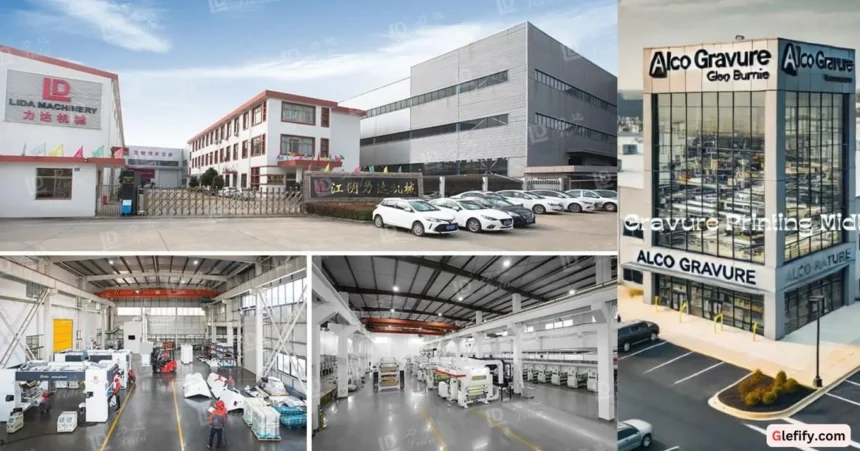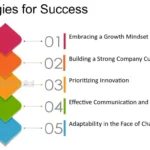For over 60 years, Alco Gravure Printing Midland was synonymous with top-tier, high-quality printing. Renowned for its precision and vibrant prints on packaging, labels, and other commercial products, the facility used gravure printing—an advanced method known for delivering unparalleled detail and color. Though the Midland plant has now closed and is repurposed for new ventures, its legacy continues to impact the world of high-definition print production.
The Storied History of the Alco Gravure Site
The Alco Gravure site, located in Glen Burnie, Maryland, traces its roots back to 1957, when it was acquired by the Publication Corporation. Since then, this strategic location has been home to numerous owners, including Maxwell Graphics and Quebecor, each adding their mark while continuing to utilize gravure printing techniques.
Spanning over six acres, the site housed two major buildings and operated under stringent environmental regulations. As a printing facility, it was subject to strict permits addressing air quality and waste management.
As time passed by, issues began to arise and environmental issues in the form of spills and leaks also needed the attention of authorities concerned.
In 2000, the property was finally sold to AKP Limited Partnership who retains the land up to this day and thus brought an end to Alco Gravure’s printing facility at this location.
Why Gravure Printing? The Many Benefits of This Revolutionary Technique
Gravure printing is acclaimed for its precision, speed, and excellent color reproduction. It is perfect for high-volume, high-quality production of packages for the following:
- Food Packaging: From a bag of chips to a bottle of soft drink and candy wrappers, gravure prints striking and eye-catching designs that capture attention on store shelves.
- Labels: From product labeling to intricate barcodes, gravure delivers sharp, high-resolution images that enhance brand appeal and provide essential information.
- Decorative Items: Wallpapers, gift wraps, and greeting cards are brought to life with gravure’s ability to produce exquisite details and rich, intricate patterns.
- Publication Printing: Gravure excels at printing high volumes of magazines, catalogs, and books, maintaining consistent quality from start to finish.
- Security Printing: Gravure is also used for secure documents, such as money, stamps, and certificates, producing designs that are difficult to replicate, ensuring safety and authenticity.
Gravure Printing Inks: A Cut Above the Rest
Gravure printing inks are thinner and flow effortlessly into engraved cylinders, producing exceptionally vibrant prints that stand out. Here’s how they compare to other types of printing inks:
| Feature | Gravure Printing Inks | Other Printing Inks |
|---|---|---|
| Viscosity | Thin, flows easily into grooves | Thicker consistency |
| Drying Time | Quick-drying, efficient for high-volume runs | May take longer to dry |
| Color Quality | Bold, vivid, long-lasting colors | May not be as vibrant |
| Durability | Resistant to fading and wear | Can fade more easily |
| Ingredients | Custom blends for better adhesion | Varies depending on the type |
Maintaining Consistency in Large Print Runs
One of the key reasons Alco Gravure was trusted for large, complex print jobs was its relentless commitment to consistency. Here’s how they ensured flawless prints every time:
- Premium Printing Plates: High-quality plates ensured uniform prints over large runs without sacrificing precision or detail.
- Ink Control: Alco Gravure employed sophisticated techniques to monitor ink usage, ensuring consistent thickness and color across every single print.
- Advanced Technology: The use of cutting-edge gravure presses allowed for precise adjustments, further ensuring that every print was as crisp as the last.
- Routine Maintenance: Regular check-ups and updates kept printing machines in peak condition, avoiding any mechanical malfunctions that could affect print quality.
- Ongoing Quality Control: Throughout the printing process, constant quality checks were made to catch potential issues early, guaranteeing exceptional results from start to finish.
- Location and Legacy: The Heart of Gravure Excellence
Situated at the heart of Anne Arundel County’s commercial hub, Alco Gravure was strategically placed at 7364 Baltimore Annapolis Blvd., Glen Burnie, Maryland. Its proximity to the site from both local and regional markets contributed much to its reputation for fast, reliable, and high-quality printing.
Tackling Environmental Challenges Head-On
Alco Gravure also earned recognition for its commitment to environmental responsibility. The company used innovative methods to manage volatile organic compound (VOC) emissions and minimize its environmental footprint. Some of these efforts included:
- Preventative Measures: Routine checks for machine leaks helped prevent VOCs from escaping.
- Safer Inks: By opting for inks with lower VOCs, Alco Gravure mitigated its environmental impact.
- Sealed Systems: Closed systems during cleaning and maintenance ensured that harmful emissions were contained.
- Advanced Air-Capture Devices: These specialized devices captured VOCs before they could escape into the atmosphere, cleaning the air and reducing pollution.
Overcoming Environmental Challenges
While Alco Gravure faced environmental hurdles—including soil contamination from a leaking underground tank—these issues were thoroughly addressed.
The site underwent extensive remediation efforts, including the installation of a cleanup system designed to treat polluted soil and groundwater. By 2009, cleanup efforts had been declared successful, and in 2010, the site was declared safe for use by the Maryland Department of the Environment.
Today, the former printing site has become a busy logistics hub with no continuing environmental concerns, thanks to the thorough efforts to restore the area.
The End of an Era: Alco Gravure Transformed
The Alco Gravure site is no longer a printing facility but has now been structurally changed into a busy warehouse for trucking, infusing life into that area. While the history of the building and its role in the printing powerhouse are remembered, the future is bright in serving the growing demand for logistics and distribution services. It brought in economic growth and created jobs, thus benefiting the local economy.
FAQ: Everything You Need to Know About Alco Gravure
1. What is gravure printing used for?
Gravure printing is ideal for high-quality applications, including food packaging, labels, magazines, and security printing, delivering detailed images with vibrant, long-lasting colors.
2. How does Alco Gravure handle VOCs?
Alco Gravure takes proactive measures to reduce VOC emissions, including using safer inks, employing air-capture systems, and maintaining strict monitoring to stay within regulatory limits.
3. Where is the Alco Gravure site located?
The site is located at 7364 Baltimore Annapolis Blvd., Glen Burnie, Maryland, spanning 6 acres in the commercial heart of Anne Arundel County.
4. What environmental problems did Alco Gravure face?
The site experienced soil and water contamination from a leaking underground tank. However, these issues were thoroughly addressed through an extensive remediation process, and the site is now environmentally safe.
5. Is Alco Gravure still printing at Glen Burnie?
No, Alco Gravure no longer operates as a printing facility. The site has transitioned into a trucking warehouse, marking the end of its printing legacy.
6. Does Alco Gravure continue operations elsewhere?
No, Alco Gravure has completely exited the printing industry. The company no longer operates under a different name or location.
Conclusion: A Legacy of Innovation and Responsibility
Alco Gravure’s Glen Burnie site may no longer print, but its influence on the printing industry remains undeniable. From its pioneering techniques in gravure printing to its commitment to environmental sustainability, Alco Gravure set a high standard. Today, the site continues to evolve, contributing to the local economy through its new role in logistics.
The transformation of the Alco Gravure site from printing powerhouse to logistics hub underscores the importance of responsible management and adaptability in the face of change.







